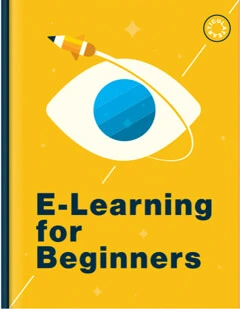Articulate Localization: Translating Updates to Your Course
Article Last Updated
This article applies to:
With our current translation workflow, your source course must be final before you translate it into other languages. However, we know that sometimes you may need to add a slide, lesson, or block—or otherwise modify the original course—after completing the translation-validation process. In those cases, retranslations of the same course into the same languages are free if done within the same billing period, but the validations may not be preserved.
The good news is we now have a solution for handling that situation. Starting with the February 2025 update, you can translate text changes made to the source language of a multi-language project without affecting other parts of the course. The ability to translate just the updates is available in Rise 360’s new multi-language authoring experience beginning March 25th.
We’re still developing the best ways to guide validators to identify the updated content in Review 360. In the meantime, we’ll update this step-by-step guide to explain features available now that can help with course updates.
- Update Your Rise 360 Course
- Update Your Storyline 360 Project
- Copy Previous Validation Suggestions from Review 360
- Request Validation for Updated Content
Update Your Rise 360 Course
Follow these steps when you need to update your multi-language Rise 360 course.
- Update the source language of your original course.
- Remember that edits won’t affect language versions until you retranslate them.
- Tip: Include a label or marker to indicate the sections you updated. For example, insert a “(u)” before any new content.
- A blue notification dot appears on the language dropdown on the top left.
- Click the language dropdown and select Back to Stack.
- From the course stack, click Update Translation to translate only the text updates you made for all existing target languages.
- Ask validators to review only the updated content. See suggestions on how to help validators find the updated content.
- Import validation changes into Rise 360.
- Publish your updated course.
If your multi-language course has an “Early Access” tag, use these steps instead:
- Save a backup copy of your Rise 360 course stack by hovering over the course tile in the dashboard, clicking the ellipsis (...) that appears, and selecting Duplicate.
- You’ll use this backup as a reference.
- Update the source language of your original course.
- Remember that edits won’t affect language versions until you retranslate them.
- Tip: Include a label or marker to indicate the sections you updated. For example, insert a “(u)” before any new content.
- Retranslate the source language by hovering over the course tile in the dashboard and clicking the ellipsis that appears. Then, select Translate, and select all the previously translated languages. Or click the course tile to see all the languages in the course stack. Then click Add Languages and select these languages.
- Retranslation automatically archives existing language versions and creates new versions based on the updated source language.
- Using the backup copy from Step 1, restore structural or media edits for each target language.
- If applicable, re-create any language-specific blocks or lessons and replace or re-add language-specific images, media, or attachments.
- Copy previous validation suggestions from Review 360 by publishing new versions to Review 360 and then following these steps to copy the suggestions manually.
- You can do these steps on your own or share them with your validator.
- Ask validators to review only the updated content. See suggestions on how to help validators find the updated content.
- Import validation changes into Rise 360.
- Publish your updated course.
Learn more about the early-access version of multi-language Rise 360 courses, including how to convert courses into the new version of Articulate Localization.
Update Your Storyline 360 Project
Follow these steps when you need to update your multi-language Storyline 360 project.
- Update the source language of your original course.
- Tip: Include a label or marker to indicate the sections you updated. For example, insert a “(u)” before any new content.
- Retranslate the source language by going to File > Localization > Source language changes found > Update Translations.
- Ask validators to review only the updated content. See suggestions on how to help validators find the updated content.
- Import validation changes into Storyline 360.
- Publish your updated course.
Copy Previous Validation Suggestions from Review 360
When a language version is retranslated in early-access multi-language courses, previous validations are not automatically copied to the new translation. You need to manually copy validation suggestions that are still relevant to the latest language versions of the course. We recommend launching two copies of the validation link side by side, one to view the previous version with the validation suggestions and the other for the current or latest version. See below for more detailed steps.
- Launch the validation link to the course in Review 360.
- Launch another browser window with the same validation link.
- Adjust both browser windows side by side to see them on one screen.
- Choose one window to show the previous version. Click the Current Version dropdown beside the title and select the previous version of the item.
- In this previous version window, click the filter icon beside the course overview navigation dropdown and select All edits. See this guide to learn more about the filter options.
- Read through each segment from the previous version and, if appropriate, copy and paste the text into the current version from the other browser window.
- Tip: If you’re copying formatted text, try using advanced tag format editing.
Request Validation for Updated Content
When a course is updated, Review 360 can’t currently indicate which parts are new and which have already been validated. However, if you follow the tip in Step #2 about inserting a label or marker when updating your course/project, your validators will quickly be able to find the updated sections. Send them the following steps:
- Click the magnifying glass icon above the validation table in the Translate tab.
- From the Search tab, type in the following Search… field and press Enter: (u) or the marker of your choice.
- Click the Current Lesson/Slide dropdown and select All Lessons/Slides.
Here’s a sample of how the results would look:
Another alternative is to add comments to the updated sections of the course. Your validators can quickly jump to these sections using Review 360’s feedback tab.
Whichever method you choose, let your validator know how to find the updated sections so they can focus their efforts on validating only the updated parts of the course. You can use the optional instructions when requesting a review to share that information.



